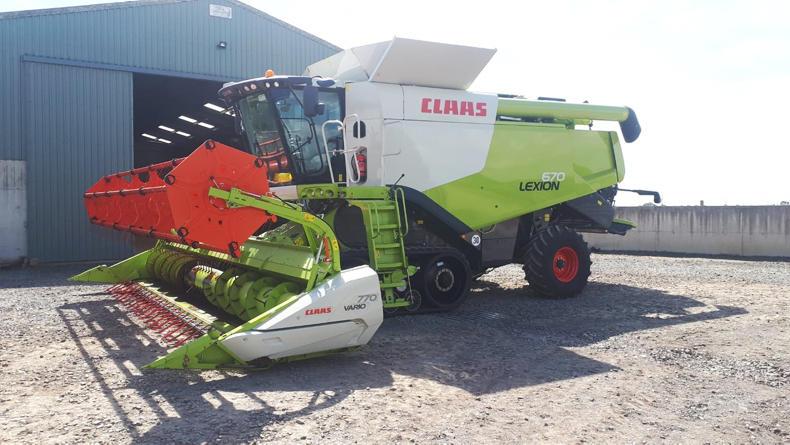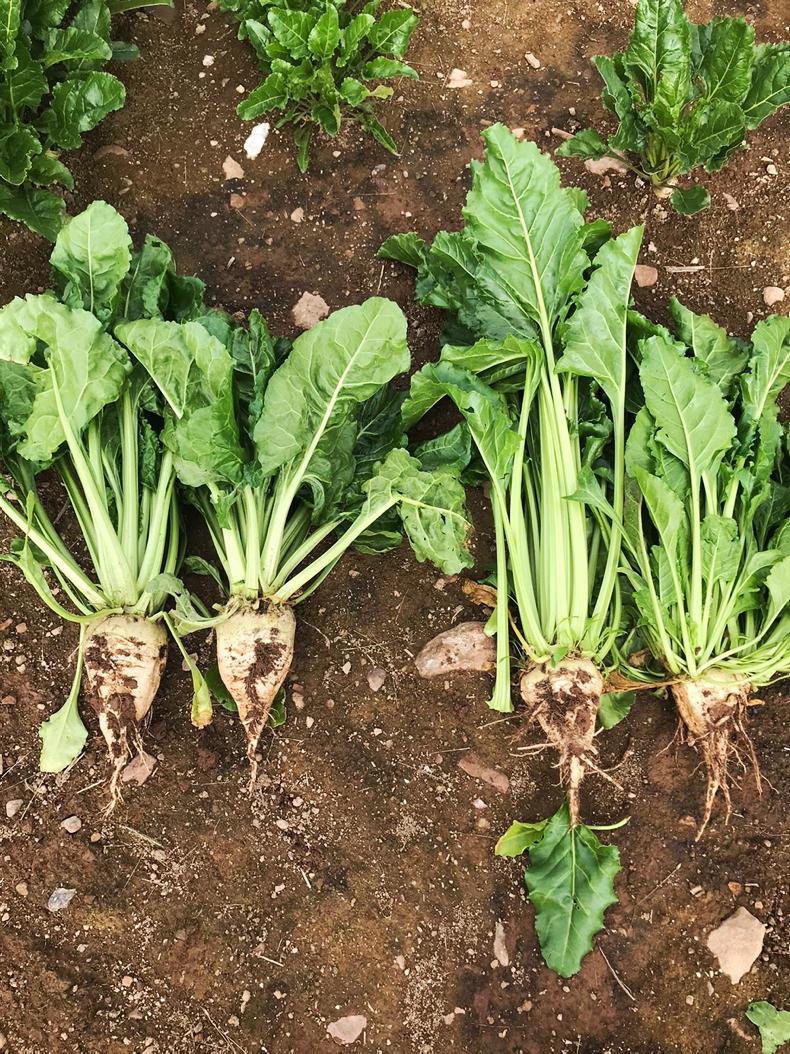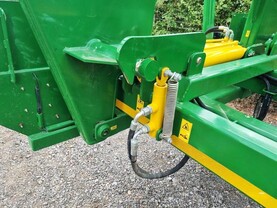Bangor,
Co Down
David managed to cut around 30ac of winter barley last week, but there has been little harvest weather since. He now has around 65ac of winter barley left to cut. In general, the weather has been broken in Down over the past month. The damp, mild weather has been good for grass growth, but has also resulted in a number of green tillers appearing in his winter oats and spring barley.

David was working on his Claas Combine this week, before starting to cut winter barley again.
He managed to harvest all of his Bazooka winter barley last week, using his Claas Lexion 670 with a 25ft header. The first field on dry ground yielded 3.3t/ac at 19% moisture content. The second field averaged 3.7t/ac, with moistures of 17.5%. The specific weights of both crops ranged from 69-70KPH. David weighs each load off the field using a weighbridge in his yard. The grain is dried using a 12t batch dryer and stored in his grain store. The grain is then collected on a monthly basis, with the first collection starting in September.
He hasn’t baled any of his straw yet, but yields appear to be back. Enquiries for straw have been steady so far.
Due to the wet winter, his winter oilseed rape crop is quite variable throughout the field
Once the fields are cleared, he plans to spread farmyard manure and deep cultivate the tramlines. He isn’t planning on planting winter oilseed rape this year. David is trying to extend the gap between oilseed crops in his rotation from one in five to one in eight. This is to help prevent issues with volunteers and clubroot, which is the reason he started growing winter oats this year for the first time. His oat crops are now ripe.
Due to the wet winter, his winter oilseed rape crop is quite variable throughout the field. Some patches are now ripe, while some patches are still green. He desiccated these crops on 17 July and may harvest them first before going back to winter barley.
David’s winter wheat crops remain green and he thinks it will be at least three weeks before the crop is fit for harvest. His spring barley crops are standing well, despite heavy rain in the area.
Delvin,
Co Westmeath
The harvest has so far been a stop-start affair in Westmeath, explains Donal. His harvest started last week with Cassia winter barley seed. Initially, he was only able to harvest the dryer part of the field. These crops suffered from drought and ripened quicker than crops in heavier areas of the field. The crop yielded 3t/ac at 19-20% moisture content. The remaining crops in that field will be ready for harvest by the weekend.
He then moved to a neighbouring crop, which yielded around 3.3t/ac at 18-21% moisture content. If the weather improves, he will be finished his winter barley harvest by the end of the week. There has been little straw baled in his area. Straw was still somewhat green at the time of harvest and needed a few days to mature. However, broken weather has prevented any baling since. Straw yields look to be back on last year. Demand for winter barley straw in the area appears to be good.

Donal's New Holland combine has parked in-field, in anticipation of better weather.
Donal is very pleased with his winter oat crops. His seed crop will be ready next week and he will cut this with his New Holland CX4080 combine with a 17ft header. His gluten-free oats will be cut by Glanbia. He is hopeful that his Graham and Costello winter wheat crops will be able to compensate for patchy areas in the field. The crops remain very green. Once the winter barley stubble is cleared, he will apply either farm yard manure, spent mushroom compost or slurry. As some of this stubble ground will be sown with a winter cereal seed crop, Donal does not intend on sowing a cover crop, due to the risk of seed shed.
Donal’s spring bean crops have plenty of pods, but he noted that these are located lower in the plant
He also questions the merit of establishing a cover crop between two winter cereal crops, as the timeframe may be too short to see any real benefits. His spring oat and barley crops are looking good. However, he did notice a small amount of green tillers in his barley crops. Donal’s spring bean crops have plenty of pods, but he noted that these are located lower in the plant.
Lismore,
Co Waterford
The harvest hasn’t been straightforward in Waterford either, due to broken weather. While Philip is largely up-to-date with cutting, it won’t be long until more crops are fit for harvest and pressure resumes.
Philip was able to start cutting his winter barley relatively early on 13 July. Yields proved hugely variable, between 3.3t/ac and 4.4t/ac, with moistures of between 18-22%. In some cases, this variation was seen in the same field. Specific weights varied accordingly, ranging from 58-69 KPH. He noted that his earlier-sown Kosmos crop yielded around 3.3t/ac. This came as a surprise to him, as this crop was looking good all year. His later-sown Pixel crop, which was sown in tougher conditions, yielded 4.4t/ac.

Philip's Enermax fodder beet (right) looks more advanced than his Conviso Smart sugar beet variety (left).
Philip harvests using a Claas Lexion 520 combine with a 16ft header. The straw walker combine leaves a good sward of straw behind. He was able to bale most of the straw and noted that yields are around two 4x4 round bales behind average. Straw demand from his regular customers is good. He has around 5ac of winter barley left to cut and will then move onto winter oats.
Philip plans to sow around 45ac of catch crop in his winter barley stubble. The catch crops, consisting of phacelia, vetch and mustard, will remain in place over winter, before being ploughed for beet next spring.
He is aiming to start harvesting his winter oats by the end of the week
He first gives the ground a single pass with a grubber, then broadcasts the seed, before rolling with a ring roller. Establishment is generally high using this method, he says. He is aiming to start harvesting his winter oats by the end of the week. Despite his winter wheat crops ripening quicker than anticipated, Philip still thinks he will be harvesting spring barley first.
The damp, warm weather has been perfect for his beet crops, he explains. When talking to Philip this week, he was applying a fungicide onto his conventional varieties. The tank mix consisted of Opera (1l/ha), as well as Epso Combitop (2kg/ha) and a foliar feed (2l/ha). He thinks his conventional varieties are slightly ahead of his Conviso Smart variety.
Bangor,
Co Down
David managed to cut around 30ac of winter barley last week, but there has been little harvest weather since. He now has around 65ac of winter barley left to cut. In general, the weather has been broken in Down over the past month. The damp, mild weather has been good for grass growth, but has also resulted in a number of green tillers appearing in his winter oats and spring barley.

David was working on his Claas Combine this week, before starting to cut winter barley again.
He managed to harvest all of his Bazooka winter barley last week, using his Claas Lexion 670 with a 25ft header. The first field on dry ground yielded 3.3t/ac at 19% moisture content. The second field averaged 3.7t/ac, with moistures of 17.5%. The specific weights of both crops ranged from 69-70KPH. David weighs each load off the field using a weighbridge in his yard. The grain is dried using a 12t batch dryer and stored in his grain store. The grain is then collected on a monthly basis, with the first collection starting in September.
He hasn’t baled any of his straw yet, but yields appear to be back. Enquiries for straw have been steady so far.
Due to the wet winter, his winter oilseed rape crop is quite variable throughout the field
Once the fields are cleared, he plans to spread farmyard manure and deep cultivate the tramlines. He isn’t planning on planting winter oilseed rape this year. David is trying to extend the gap between oilseed crops in his rotation from one in five to one in eight. This is to help prevent issues with volunteers and clubroot, which is the reason he started growing winter oats this year for the first time. His oat crops are now ripe.
Due to the wet winter, his winter oilseed rape crop is quite variable throughout the field. Some patches are now ripe, while some patches are still green. He desiccated these crops on 17 July and may harvest them first before going back to winter barley.
David’s winter wheat crops remain green and he thinks it will be at least three weeks before the crop is fit for harvest. His spring barley crops are standing well, despite heavy rain in the area.
Delvin,
Co Westmeath
The harvest has so far been a stop-start affair in Westmeath, explains Donal. His harvest started last week with Cassia winter barley seed. Initially, he was only able to harvest the dryer part of the field. These crops suffered from drought and ripened quicker than crops in heavier areas of the field. The crop yielded 3t/ac at 19-20% moisture content. The remaining crops in that field will be ready for harvest by the weekend.
He then moved to a neighbouring crop, which yielded around 3.3t/ac at 18-21% moisture content. If the weather improves, he will be finished his winter barley harvest by the end of the week. There has been little straw baled in his area. Straw was still somewhat green at the time of harvest and needed a few days to mature. However, broken weather has prevented any baling since. Straw yields look to be back on last year. Demand for winter barley straw in the area appears to be good.

Donal's New Holland combine has parked in-field, in anticipation of better weather.
Donal is very pleased with his winter oat crops. His seed crop will be ready next week and he will cut this with his New Holland CX4080 combine with a 17ft header. His gluten-free oats will be cut by Glanbia. He is hopeful that his Graham and Costello winter wheat crops will be able to compensate for patchy areas in the field. The crops remain very green. Once the winter barley stubble is cleared, he will apply either farm yard manure, spent mushroom compost or slurry. As some of this stubble ground will be sown with a winter cereal seed crop, Donal does not intend on sowing a cover crop, due to the risk of seed shed.
Donal’s spring bean crops have plenty of pods, but he noted that these are located lower in the plant
He also questions the merit of establishing a cover crop between two winter cereal crops, as the timeframe may be too short to see any real benefits. His spring oat and barley crops are looking good. However, he did notice a small amount of green tillers in his barley crops. Donal’s spring bean crops have plenty of pods, but he noted that these are located lower in the plant.
Lismore,
Co Waterford
The harvest hasn’t been straightforward in Waterford either, due to broken weather. While Philip is largely up-to-date with cutting, it won’t be long until more crops are fit for harvest and pressure resumes.
Philip was able to start cutting his winter barley relatively early on 13 July. Yields proved hugely variable, between 3.3t/ac and 4.4t/ac, with moistures of between 18-22%. In some cases, this variation was seen in the same field. Specific weights varied accordingly, ranging from 58-69 KPH. He noted that his earlier-sown Kosmos crop yielded around 3.3t/ac. This came as a surprise to him, as this crop was looking good all year. His later-sown Pixel crop, which was sown in tougher conditions, yielded 4.4t/ac.

Philip's Enermax fodder beet (right) looks more advanced than his Conviso Smart sugar beet variety (left).
Philip harvests using a Claas Lexion 520 combine with a 16ft header. The straw walker combine leaves a good sward of straw behind. He was able to bale most of the straw and noted that yields are around two 4x4 round bales behind average. Straw demand from his regular customers is good. He has around 5ac of winter barley left to cut and will then move onto winter oats.
Philip plans to sow around 45ac of catch crop in his winter barley stubble. The catch crops, consisting of phacelia, vetch and mustard, will remain in place over winter, before being ploughed for beet next spring.
He is aiming to start harvesting his winter oats by the end of the week
He first gives the ground a single pass with a grubber, then broadcasts the seed, before rolling with a ring roller. Establishment is generally high using this method, he says. He is aiming to start harvesting his winter oats by the end of the week. Despite his winter wheat crops ripening quicker than anticipated, Philip still thinks he will be harvesting spring barley first.
The damp, warm weather has been perfect for his beet crops, he explains. When talking to Philip this week, he was applying a fungicide onto his conventional varieties. The tank mix consisted of Opera (1l/ha), as well as Epso Combitop (2kg/ha) and a foliar feed (2l/ha). He thinks his conventional varieties are slightly ahead of his Conviso Smart variety.









 This is a subscriber-only article
This is a subscriber-only article









SHARING OPTIONS: